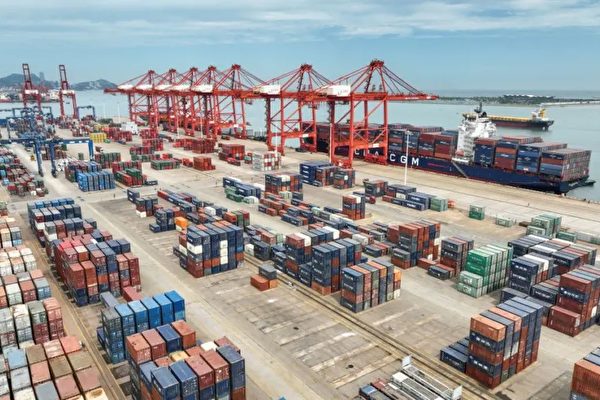Nomura Holdings Inc.’s economists have stated that increasing Chinese exports to Asian countries coupled with a decrease in purchases raise the possibility of China tightening export credit to the Asian region.
According to Bloomberg, economists Sonal Varma and Si Ying Toh from Nomura Securities wrote in a client report on Friday, May 10th, that “The main drivers of China’s export growth include industrial overcapacity, particularly in green energy products, strong Asian domestic demand, and ongoing supply chain restructuring.”
They noted: “The trade relationship between Asia and China is undergoing structural changes,” and “With increasing Asian imports of Chinese consumer goods, China may also tighten export credit to other regions in Asia.”
Facing difficulties penetrating Western markets, import growth of Chinese goods in Europe and the US has been slow or stagnant. China’s trade data for April released by the authorities showed that from January to April, exports to the ten ASEAN countries, including Singapore, Thailand, and Indonesia, increased by 6.3% to over $185 billion. The total trade volume between ASEAN and China reached $307 billion, surpassing that with the EU or the US during the same period. Additionally, Chinese exports to Vietnam grew by over 20%.
Nomura Securities pointed out that the trade balance between Asia and China shifted from a surplus of $24.5 billion in 2013 to a deficit of $192.6 billion in 2023, with a significant portion attributed to the trade deficit between India and Southeast Asian countries like Vietnam, Thailand, the Philippines, Malaysia, and China.
Varma and Toh highlighted that by 2023, seven out of nine Asian economies had a trade deficit with China, including South Korea, which experienced a deficit for the first time in 31 years.
Varma, in an article published in the Nikkei on April 29th, emphasized the structural transformation of trade relations between Asia and China. Over the past three years, most economies in the region have seen a decrease in the proportion of their total exports to China, while imports from China have increased.
She analyzed that the decrease in shipments to China is due to two reasons: first, under pressure from the ongoing decoupling effort by the US, supply chains are diversifying away from China, reducing China-centric processing trade. Secondly, weak domestic demand in China has negatively impacted exports to China from other regions in Asia. This soft demand is more a result of issues with Chinese enterprises, especially in the real estate sector, due to the ongoing stagnation in the Chinese property market.
Varma pointed out that multinational corporations are increasingly seeking to move supply chains away from China, which will slow down China-centric processing trade. Due to structural challenges in the Chinese economy and geopolitical headwinds, mid-term growth is expected to slow down with less investment, further reducing China’s absorption of Asian exports. Additionally, the US is intensifying scrutiny on Chinese firms evading tariffs and trade restrictions, potentially seeking to close loopholes that allow companies to ship products through third countries like Mexico and Vietnam.
She stated that this signifies China will continue to seek new export markets, with strong economic growth in its neighboring countries in Asia making the region an obvious destination.
Nomura Securities highlighted besides the threat of export credit tightening, there are other significant mid-term impacts. Economists warned that pressures on local producers are increasing, which could lead to the rise of Asian protectionism and changes in investment flows between China and other regions in Asia.
In her Nikkei article, Varma expressed that if China’s import demand growth remains slower than in the past, most Asian economies will need to explore new export markets and diversify their trade partners to keep up with their own export growth. Local enterprises will need to prepare for more intense competition from China, not only in new export markets but domestically as well. For instance, China is exporting more chemicals and cars to South Korea, automobiles to Thailand, and chemicals, steel, and aluminum to India. This intensifies competition for local manufacturers and could become a source of trade frictions.

